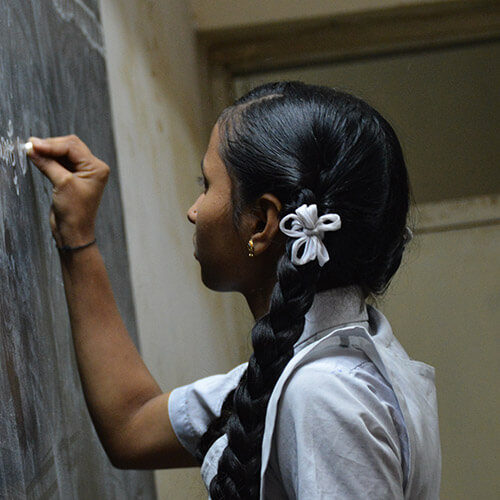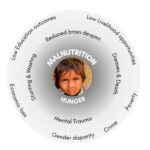Often perceived as the same, hunger and malnutrition are in fact distinct yet related entities.
Hunger refers to the physical sensation of needing food, a direct result of food scarcity impacting immediate well-being and survival.

Malnutrition, on the other hand, is a more insidious condition stemming from a chronic lack of essential nutrients, regardless of food quantity. It leads to long-term health problems, cognitive impairment, and stunted growth in children.
While hunger is an urgent call for food, malnutrition is a complex, underlying crisis of quality nutrition.
Understanding Hunger & Child Malnutrition in Depth Hunger: The Immediate Lack of Food
Hunger is the immediate physical discomfort caused by a lack of food. This is a visible and acute problem, especially in poverty or areas of food scarcity. Hunger is an urgent call to action, prompting immediate relief efforts such as food distribution.
Causes:
- Poverty: Lack of financial resources to buy food.
- Food scarcity: Unavailability of food due to factors like poor agriculture, natural disasters, or war.
- Economic and political issues: Economic downturns, unemployment, or political instability can restrict access to food.
- Social inequality: Certain groups may face more hunger due to discrimination or lack of resource access.
Effects:
- Physical weakness and fatigue.
- Decreased ability to concentrate and perform tasks.
- The weakened immune system leads to a higher risk of illnesses.
- In children, it can hinder growth and development.
Solutions:
- Food aid and hunger relief programs.
- Economic support and job creation to alleviate poverty.
- Improving agricultural practices and food distribution systems.
- Policies addressing social and economic inequalities.

Malnutrition: A Complex Deficiency
Malnutrition, on the other hand, is a more complex and often hidden crisis. It refers to deficiencies, imbalances, or excesses in a person’s intake of energy and nutrients. Malnutrition encompasses undernutrition (wasting, stunting, and underweight), inadequate vitamins or minerals, and resulting diet-related noncommunicable diseases.
Causes:
- Poor diet: Lack of access to a variety of nutritious foods.
- Poverty and food insecurity: Inability to afford or access healthy food.
- Poor maternal health and nutrition: Affects a child’s nutrition from birth.
- Lack of nutrition knowledge: This leads to inadequate dietary choices.
- Diseases and health conditions: Illnesses like diarrhea can lead to nutrient loss.
Solutions:
- Nutritional programs focusing on balanced diets for children.
- Education programs for parents and caregivers about proper nutrition.
- Healthcare initiatives targeting maternal health and child healthcare.
- Government and NGO-led initiatives to tackle poverty and improve food access.
Effects:
- Stunted growth and development.
- The weakened immune system leads to a higher risk of infections and diseases.
- Long-term health issues like diabetes or heart disease.
- In severe cases, it can lead to death.
The Impact
While hunger is often visible, malnutrition is a silent epidemic. A child may receive enough to quell hunger yet still be malnourished. This dichotomy is where our understanding needs depth. The impact of these issues is profound. It’s not just about a child’s present hunger or current health; it’s about the future they can or cannot build due to these limitations.

The way forward is together
At ANNADA, we work to bridge the beneficiary’s nutrition gap while promoting health-seeking behaviors & good nutrition practices in their community. Corporate donors can create strategic value by aligning with our high-impact initiatives, benefitting both the nation and their CSR objectives.
We invite you to connect with us on connect@annada.org.









